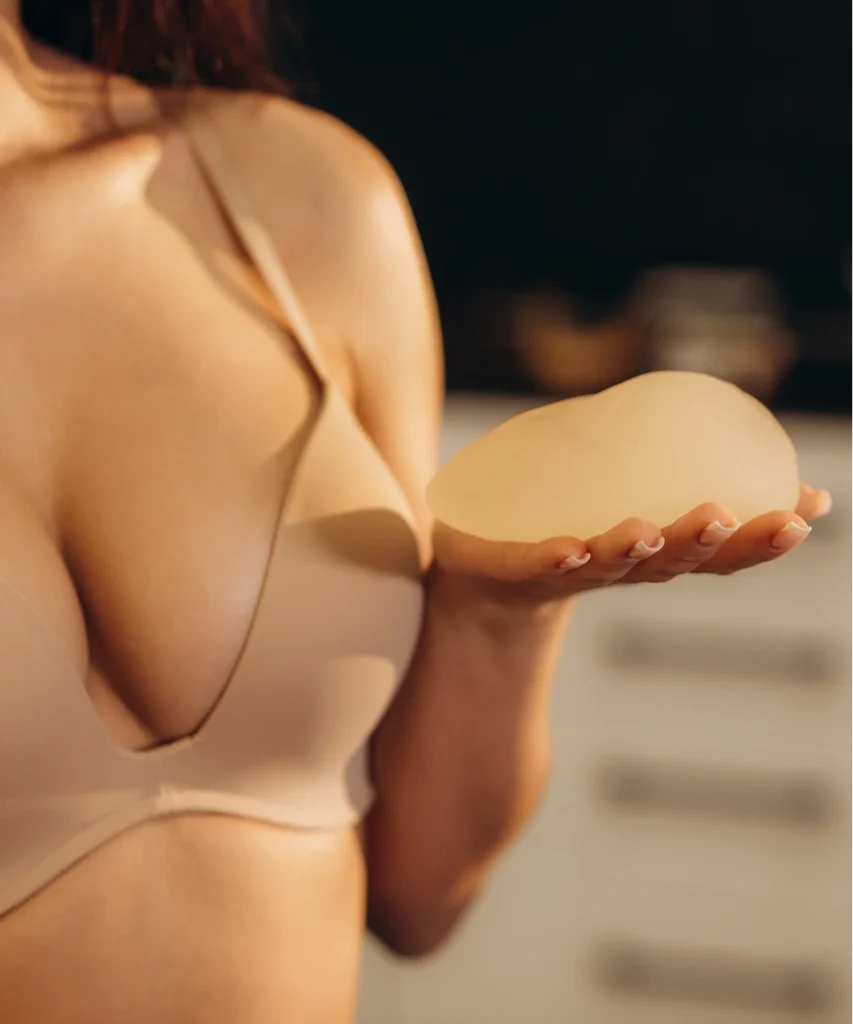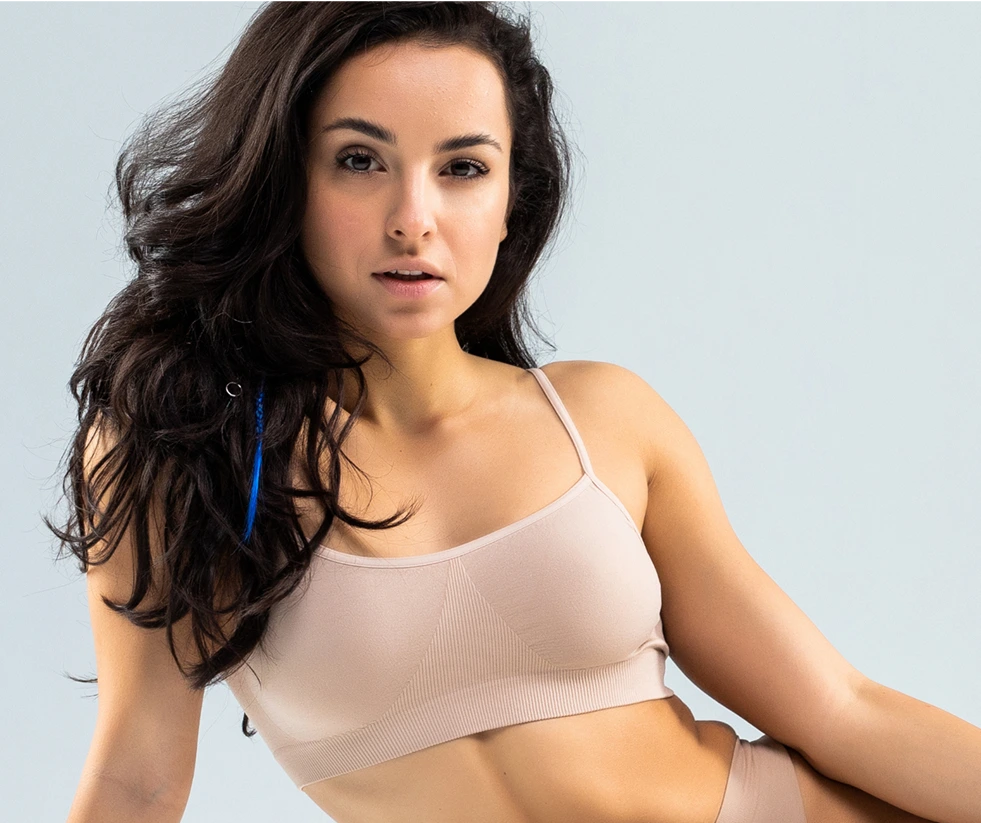Breast Augmentation
in Houston and Pearland, TX
You may be one of the many women who feel uncomfortable about the size or symmetry of their breasts and are looking for a cosmetic surgical solution. At Premier Plastic Surgery, Dr. Christopher Hankins can help augment your bust line with natural-looking breast enhancement.
Dr. Hankins strongly believes that well-informed and well-advised patients are empowered to make sound decisions that will benefit them for years. This is particularly important in breast augmentation or breast enlargement surgery, as the specific breast implants used are ultimately selected based on the patient’s goals under the guidance of the surgeon. Premier Plastic Surgery utilizes the “High Five” protocol, a disciplined and proven approach for determining the right size, projection, and type of breast implant for you. Although artistic ability is essential in selecting the right breast implant, so are parameters such as symmetry, skin laxity, skin stretch, the base width of the breasts, pocket size, and the amount of volume needed to fill the breast. Nothing is left to chance in giving you the best possible results.
The first decisions to make are about the type of implant (saline or silicone implants) and its texture (textured or smooth).
Silicone breast implants tend to have a more natural feel, are softer to the touch than saline implants, and have a lower chance of rupture.
Saline-filled implants are filled with a sterile saline solution, similar to saltwater in the human body. The sizing can be adjusted after insertion into the breast pocket, as the inserts can be either pre-filled or filled once in place.
Fat transfer breast augmentation is a more natural type of breast augmentation that utilizes fat cells extracted from other areas of the body through liposuction.
It is not always necessary to place an implant beneath the muscle. In many instances, provided the native breast tissue is sufficiently thick, the implant can be placed beneath the breast tissue and over the muscle.
Disadvantages of the submuscular approach include increased recovery time, increased pain, animation of the breast implants with muscular contraction, and an increased risk of a “double bubble” deformity, in which a mound is created beneath the muscle, causing the breast to fall off the mound. These can be avoided by judicious use of a submuscular pocket, with the implant placed in such a pocket only when clinically indicated.
One of the principal complications of breast augmentation is capsular formation, in which a hard, firm capsule can form around the implant due to a smoldering sub-clinical infection with S. epidermidis. To minimize this risk, Dr. Hankins utilizes the “no-touch” technique, in which the incision for the breast pocket is re-prepped, gloves are changed, and the implant is delivered into the pocket using a Keller Funnel, thus avoiding contact with either gloves or the skin surrounding the incision of the breast pocket.
The type of incision used is a crucial part of the decision-making process. The various types of incisions used in breast augmentation are:
Inframammary – An incision made at the bottom of the breast near the breast fold. This is the most commonly used incision, as it allows for improved accuracy of implant placement.
Areolar or Periareolar – An incision made around the edge of the nipples. This incision serves as the entry point for the implant.
Transaxillary – This type of incision is made in the crease of the armpit where the implant is inserted.
Transumbilical –This type of incision is called the “scarless” option because it is made within the belly button. This approach requires the use of special surgical tools.
If you’re interested in breast augmentation in Houston, the first step is to schedule an initial consultation with Dr. Hankins at Premier Plastic Surgery.
When you visit the practice, it is essential to disclose your medical history and any goals and expectations that you have with a breast augmentation. Dr. Hankins will discuss your options, the incision and placement techniques, and their pros and cons.
He will help you decide on the placement of your breast implants, your desired cup size, and implant type. You can also try implant sizers to determine your optimal size and see before-and-after photos of other patients.
We will create a surgical plan for you once he deems you suitable for the procedure and you have made some decisions together. Our patient coordinator will then assist you in scheduling your appointment, estimating the cost of the procedure, and providing pre-surgery instructions to help ensure your procedure is as successful as possible.

After your breast augmentation with Dr. Hankins has been scheduled, you will need to begin preparing for the day of surgery. You will be strongly encouraged to read all of the pre-operative and post-operative instructions carefully. Below are some tips to keep in mind to have a smoother surgical procedure and stressless recovery:
Dr. Hankins utilizes the Akademikliniken method, initially described by Per Heden in Stockholm, Sweden, to determine when and by how much the fold beneath the breast should be lowered and to place the incision precisely at the level of the new fold.
The specific type of incision and approach is based on each patient’s anatomy, the size of the enlargement, the type of breast implant, the agreed-upon preference, and Dr. Hankins’s recommendation.



Breast Augmentation Cost
Dr. Christopher Hankins is an excellent choice for breast augmentation in Pearland and the surrounding Houston area. He believes in offering patients only treatments that are in their best interests. His commitment to his patients is to always carefully evaluate the individual, not just the plastic or aesthetic surgery issue under consideration.

After your breast augmentation, Dr. Hankins will have you return about a week post-surgery so they can monitor your recovery and remove any sutures and bandages.
You can expect another appointment in six to eight weeks, followed by another one three months post-surgery, and then again six months later. You may also have some photos taken at one of your final check-ups for a comparison photo.
Women are often concerned about scarring from their breast enlargement procedure. Dr. Hankins explains that scarring resulting from breast augmentation depends on which technique is utilized.
In the submammary approach, the scar is approximately 4 cm or less in length and is placed just above the inframammary fold, which is the junction between the breast and the chest wall.
In the periareolar approach, the scar is located at the junction of the pigmented and non-pigmented skin at the border of the areola.
There are also two methods by which the breast may be augmented without placing any scars on the breast. They are called transaxillary and transumbilical (TUBA).
In the transaxillary approach, an incision is placed in the armpit area. A dissection plane can then be readily developed below the pectoralis major (fan-shaped muscle in the chest) or, in exceptional circumstances, beneath the pectoralis fascia (thin layer of tissue covering muscle), as seen in female bodybuilders.
In the TUBA or transumbilical approach, two incisions are made inside the umbilicus (depression at the center of the abdomen) at 10 and 2 o’clock. Subcutaneous tunnels are then created from the umbilicus to the breast. Using this approach, the implants can be placed either above or below the muscle.
If you have any pre-existing medical conditions or comorbidities, do everything in your power, working hand-in-hand with your primary care physician, to optimize those as much as medically possible prior to surgery.
Be extremely transparent with your surgeon regarding your past medical history, any treatment you had in the past, and the last time you smoked, if you are a smoker. Lying about smoking cigarettes can result in devastating complications for the patient. We strongly recommend being truthful and forthcoming even if surgery has to be delayed. It is for the patient’s own good.
Avoid any type of dietary supplement or medication that results in thinning of the blood.
You can gradually resume your exercise routine about one week after your breast augmentation, except for chest muscle exercises, which can usually be resumed around six weeks after the procedure.
We encourage you not to rush your recovery by using your pectoralis muscle prematurely. Doing so can lead to potential complications such as displacement of the implant to the sides, fluid collection, or an increased risk of capsular contracture.
Breast augmentation surgeries sometimes involve unwanted side effects. Some of them are listed below:
Anesthesia risks
Bleeding
Breast implant-associated anaplastic large cell lymphoma (BIA-ALCL) or other sporadic cancers in the capsule around the breast, such as breast implant-associated squamous cell carcinoma (BIA-SCC)
Capsular contracture
Changes in nipple or breast sensation
Fluid accumulation
Hematoma
Implant leakage or rupture
Infection
Persistent pain
Poor scarring
Possibility of revision surgery
Wrinkling of the skin over the implant
Wrong or faulty position of the implant
If you experience any of the previously mentioned reactions or long-lasting side effects, please contact our office immediately so we can assist you. If the side effects seem serious, do not hesitate to call 911.
Schedule a Consultation